Impacts of E-Micromobility on the Sustainability of Urban Transportation—A Systematic Review
Abstract
:1. Introduction
- Q1: What are e-micromobility’s impacts on current travel behaviors?
- Q2: What are e-micromobility’s impacts on energy consumption?
- Q3: What are e-micromobility’s impacts on the urban environment?
- Q4: What are the safety issues of e-micromobility and the required regulations?
2. Materials and Methods
2.1. Search Method for the Identification of Studies
2.2. Inclusion/Exclusion Criteria for the Selection of Studies
2.3. Selection and Analysis of Studies
3. Results
3.1. Impacts on Travel Behaviors
3.1.1. Average E-Micromobility Trips per Day
3.1.2. Average Distance and Time of E-Micromobility Usage
3.1.3. Purpose of E-Micromobility Usage
3.1.4. Modal Shift to E-Micromobility
3.2. Impacts on Energy Consumption
3.3. Environmental Impacts
3.4. Safety Issues and Regulations
4. Conclusions
Author Contributions
Funding
Institutional Review Board Statement
Informed Consent Statement
Data Availability Statement
Acknowledgments
Conflicts of Interest
References
- International Energy Agency (IEA). Tracking Transport 2020 Report. 2020. Available online: https://www.iea.org/topics/transport (accessed on 20 December 2020).
- U.S. Energy Information Administration. Use of Energy Explained: Energy Use for Transportation. 2020. Available online: https://www.eia.gov/energyexplained/use-of-energy/transportation.php (accessed on 20 December 2020).
- EEA. Annual European Union Greenhouse Gas Inventory 1990–2016 and Inventory Report 2018. Submission to the UNFCCC Secretariat, European Environment Agency. 2018. Available online: https://www.eea.europa.eu/publications/european-union-greenhouse-gas-inventory-2018/at_download/file (accessed on 20 December 2020).
- European Union. Innovation. “Communication from the Commission to the European Parliament, the Council, the European Economic and Social Committee and the Committee of the Regions.” A New Skills Agenda for Europe; European Commission: Brussels, Belgium, 2014. [Google Scholar]
- Baptista, P.C.; Azevedo, I.L.; Farias, T.L. ICT Solutions in Transportation Systems: Estimating the Benefits and Environmental Impacts in the Lisbon. Procedia Soc. Behav. Sci. 2012, 54, 716–725. [Google Scholar] [CrossRef] [Green Version]
- Chang, A.; Miranda-Moreno, L.; Clewlow, R.; Sun, L. TREND OR FAD? Deciphering the Enablers of Micromobility in the U.S.; SAE International: Warrendale, PA, USA, 2019. [Google Scholar]
- Micromobility. Available online: https://en.wikipedia.org/wiki/Micromobility#:~:text=Micromobility%20refers%20to%20a%20range,pedal%20assisted%20(pedelec)%20bicycles (accessed on 21 February 2021).
- Micromobility: Where It’s Come from and Where It’s Going. Available online: https://www2.deloitte.com/us/en/insights/focus/future-of-mobility/micro-mobility-is-the-future-of-urban-transportation.html (accessed on 21 February 2021).
- Boglietti, S.; Barabino, B.; Maternini, G. Survey on e-Powered Micro Personal Mobility Vehicles: Exploring Current Issues towards Future Developments. Sustainability 2021, 13, 3692. [Google Scholar] [CrossRef]
- O’Hern, S.; Estgfaeller, N. A Scientometric Review of Powered Micromobility. Sustainability 2020, 12, 9505. [Google Scholar] [CrossRef]
- Heineke, K.; Kloss, B.; Darius, S.; Weig, F. Micromobility’s 15,000-mile Checkup. McKinsey & Company. 2019. Available online: https://www.mckinsey.com/industries/automotive-and-assembly/our-insights/micromobilitys-15000-mile-checkup (accessed on 2 January 2021).
- Heineke, K.; Kloss, B.; Darius, S.; Scurtu, D. Micromobility: Industry Progress, and a Closer Look at the CASE of Munich. McKinsey & Company. 2019. Available online: https://www.mckinsey.com/industries/automotive-and-assembly/our-insights/micromobility-industry-progress-and-a-closer-look-at-the-case-of-munich (accessed on 2 January 2021).
- City of Chicago. E-Scooter Pilot Evaluation; City of Chicago: Chicago, IL, USA, 2020.
- Leger, S.; McLaughlin, D.; Tracksdorf, K. Leading the Charge on the Canadian E-bike Integration: A Discussion on the Emerging & Unchartered Role of Micromobility; WSP Global: Monteral, QC, Canada, 2018. [Google Scholar]
- Reck, D.; Guidon, S.; Haitao, H.; Axhausen, K. Explaining shared micromobility usage, competition and mode choice by modelling empirical data from Zurich, Switzerland. ETH Zurich 2020. [Google Scholar] [CrossRef]
- Hardt, C.; Bogenberger, K. Usage of E-scooters in Urban Environments. Transp. Res. Procedia 2019, 37, 155–162. [Google Scholar] [CrossRef]
- McKenzie, G. Urban mobility in the sharing economy: A spatiotemporal comparison of shared mobility services. Comput. Environ. Urban Syst. 2020, 79, 101418. [Google Scholar] [CrossRef]
- Fyhri, A.; Fearnley, N. Effects of e-bikes on bicycle use and mode share. Transp. Res. Part D Transp. Environ. 2015, 36, 45–52. [Google Scholar] [CrossRef] [Green Version]
- Heineke, K.; Kloss, B.; Darius, S. The Future of Micromobility: Ridership and Revenue after a Crisis. McKinsey & Company. 2020. Available online: https://www.mckinsey.com/industries/automotive-and-assembly/our-insights/the-future-of-micromobility-ridership-and-revenue-after-a-crisis (accessed on 2 January 2021).
- Cherry, C.; Yang, H.; Jones, L.; He, M. Dynamics of electric bike ownership and use in Kunming, China. Transp. Policy 2016, 45, 127–135. [Google Scholar] [CrossRef] [Green Version]
- Castro, A.; Gaupp-Berghausen, M.; Dons, E.; Standaert, A.; Laeremans, M.; Clark, A.; Anaya-Boig, E.; Cole-Hunter, T.; Avila-Palencia, I.; Rojas-Rueda, D.; et al. Physical activity of electric bicycle users compared to conventional bicycle users and non-cyclists: Insights based on health and transport data from and online survey in seven European cities. Transp. Res. Interdiscip. Perspect. 2019, 1. [Google Scholar] [CrossRef]
- Li, A.; Zhao, P.; He, H.; Axhausen, K. Understanding the variations of micro-mobility behavior before and during COVID-19 pandemic period. ETH Zur. Res. Collect. 2020. [Google Scholar] [CrossRef]
- Pimentel, R.; Lowry, M. If You Provide, Will They Ride? Motivators and Deterrents to Shared Micro-Mobility. Pacific Northwest Transportation Consortium; USDOT University Transportation Center for Federal Region 10, University of Washington: Seattle, WA, USA, 2020. [Google Scholar]
- Cairns, S.; Behrendt, F.; Raffo, D.; Beaumont, C.; Kiefer, C. Electrically Assisted Bikes: Potential Impacts on Travel Behaviour. Transp. Res. Part A 2017, 103, 327–342. [Google Scholar] [CrossRef] [Green Version]
- Mostofi, H.; Masoumi, H.; Dienel, H.-L. The Association between Regular Use of Ridesourcing and Walking Mode Choice in Cairo and Tehran. Sustainability 2020, 12, 5623. [Google Scholar] [CrossRef]
- Mostofi, H.; Masoumi, H.; Dienel, H.-L. The Relationship between Regular Use of Ridesourcing and Frequency of Public Transport Use in the MENA Region (Tehran and Cairo). Sustainability 2020, 12, 8134. [Google Scholar] [CrossRef]
- Mostofi, H.; Masoumi, H.; Dienel, H.-L. The Association between the Regular Use of ICT Based Mobility Services and the Bicycle Mode Choice in Tehran and Cairo. Int. J. Environ. Res. Public Health 2020, 17, 8767. [Google Scholar] [CrossRef] [PubMed]
- Samaha, A.; Mostofi, H. Predicting the Likelihood of Using Car-Sharing in the Greater Cairo Metropolitan Area. Urban Sci. 2020, 4, 61. [Google Scholar] [CrossRef]
- Agora Verkehrswende. Shared E-Scooters: Paving the Road Ahead, Policy. In Recommendations for Local Government; Agora Verkehrswende: Berlin, Germany, 2019. [Google Scholar]
- Hollingsworth, J.; Copeland, B.; Johnson, J. Are e-scooters polluters? The environmental impacts of shared dockless electric scooters. Environ. Res. Lett. 2019, 14. [Google Scholar] [CrossRef]
- Fernando, V. How Electric Scooters Will Revolutionise Southeast Asia’s Congested Cities. Available online: https://e27.co/how-electric-scooters-will-revolutionise-southeast-asias-congested-cities-20190625/ (accessed on 10 January 2021).
- Campisi, T.; Akgün, N.; Tesoriere, G. An Ordered Logit Model for Predicting the Willingness of Renting Micro Mobility in Urban Shared Streets: A Case Study in Palermo, Italy. ICCSA 2020, 796–808. [Google Scholar] [CrossRef]
- Unhabitat, Sustainbale Development Goals. Available online: https://unhabitat.org/about-us/sustainable-development-goals (accessed on 10 January 2021).
- Martínez-Navarro, A.; Cloquell-Ballester, V.; Segui-Chilet, S. Photovoltaic Electric Scooter Charger Dock for the Development of Sustainable. IEEE Access 2020, 8, 169486–169495. [Google Scholar] [CrossRef]
- Bedmutha, N.; Petkar, G.; Lin, H.; Nema, T. Shared Electric Micro-Mobility Solutions Could Offset 50% of Transportation Energy Demand for Pittsburgh Energy Science, Technology and Policy; Carnegie Mellon University: Pittsburgh, PA, USA, 2020. [Google Scholar]
- Brdulak, A.; Chaberek, G.; Jagodzinski, J. Determination of Electricity Demand by Personal Light Electric Vehicles (PLEVs): An Example of e-Motor Scooters in the Context of Large City. Energies 2020, 13, 194. [Google Scholar] [CrossRef] [Green Version]
- Let’s Count the Ways E-Scooters Could Save the City. Available online: https://www.wired.com/story/e-scooter-micromobility-infographics-cost-emissions/ (accessed on 20 December 2020).
- Severengiz, S.; Finke, S.; Schelte, N.; Forrister, H. Assessing the environmental impact of novel mobility services using shared electric scooters as an example. Procedia Manuf. 2020, 43, 80–87. [Google Scholar] [CrossRef]
- Moreau, H.; de Jamblinne de Meux, L.; Zeller, V.; D’Ans, P.; Ruwet, C.; Achten, W. Dockless E-Scooter: A Green Solution for Mobility? Comparative Case Study between Dockless E-Scooters, Displaced Transport, and Personal E-Scooters Management in Poland. Sustainability 2020, 12, 1803. [Google Scholar] [CrossRef] [Green Version]
- The 7 Myths about e-Scooters. Available online: https://www.tier.app/the-7-myths-about-e-scooters/ (accessed on 15 January 2021).
- Trivedi, T.; Liu, C.; Antonio, A.; Wheaton, N.; Kreger, V.; Yap, A.; Schriger, D.; Elmore, J. Injuries associated with standing electric scooter use. JAMA Netw Open. 2019, 2. [Google Scholar] [CrossRef]
- Feng, Y.; Zhong, D.; Sun, P.; Zheng, W.; Cao, Q.; Luo, X.; Lu, Z. Micromobility in Smart Cities: A Closer Look at Shared Dockless E-Scooters via Big Social Data. arXiv 2020, arXiv:2010.15203. [Google Scholar]
- Rayaprolu, S.; McCarthy, L.; Gifford, J. Regulatory Harmonization and Collaborative Governance: Exploring 1 the SharedMicromobility Policy Practices for Post-Pandemic Deployment. 2020. Available online: https://ssrn.com/abstract=3680073 (accessed on 10 January 2021).
- Bielinski, T.; Wazna, A. Electric Scooter Sharing and Bike Sharing Use Behaviour and Characteristics. Sustainability 2020, 12, 9640. [Google Scholar] [CrossRef]
- Pimentel, D.; Lowry, M.; Koglin, T.; Pimentel, R. Innovation in a Legal Vacuum: The Uncertain Legal Landscape for Shared Micro-Mobility. J. Law Mobil. 2020, 2020. [Google Scholar] [CrossRef]
- Bryant, A. Usain Bolt Brings His E-Scooters to Japan. Available online: https://learningenglish.voanews.com/a/usain-bolt-brings-his-e-scooters-to-japan/5173967.html (accessed on 10 January 2021).
- Intelligent Transport, E-Scooters Begin Rollout across Five Districts in Dubai. Available online: https://www.intelligenttransport.com/transport-news/110604/e-scooters-begin-rollout-across-five-districts-in-dubai/ (accessed on 4 January 2021).
- Mathew, J.; Liu, M.; Seeder, S.; Li, H.; Bullock, D. Analysis of E-Scooter Trips and Their Temporal Usage Patterns. ITE J. 2019, 89, 44–49. [Google Scholar]
- Johnston, K.; Oakley, D.; Durham, A.; Bass, C.; Kershner, S. Regulating Micromobility: Examining Transportation Equity and Access. J. Comp. Urban Law Policy 2020, 4, 685–723. Available online: https://readingroom.law.gsu.edu/jculp/vol4/iss1/35 (accessed on 10 January 2021).
- Dixon, S.; Bornstein, J.; Pankratz, D. Urban Transport—Cities Rethink the Basics; The 2020 Deloitte City Mobility Index; Deloitte: London, UK, 2020. [Google Scholar]
- Tier’s Lessons from the World’s Scooter Capital. Available online: https://sifted.eu/articles/tier-scooters-paris/#:~:text=In%20July%2C%20following%20a%20tightly,5%2C000%20scooters%20in%20the%20city (accessed on 15 January 2021).
- Mostofi, H. The Association between ICT-Based Mobility Services and Sustainable Mobility Behaviors of New Yorkers. Energies 2021, 14, 3064. [Google Scholar] [CrossRef]
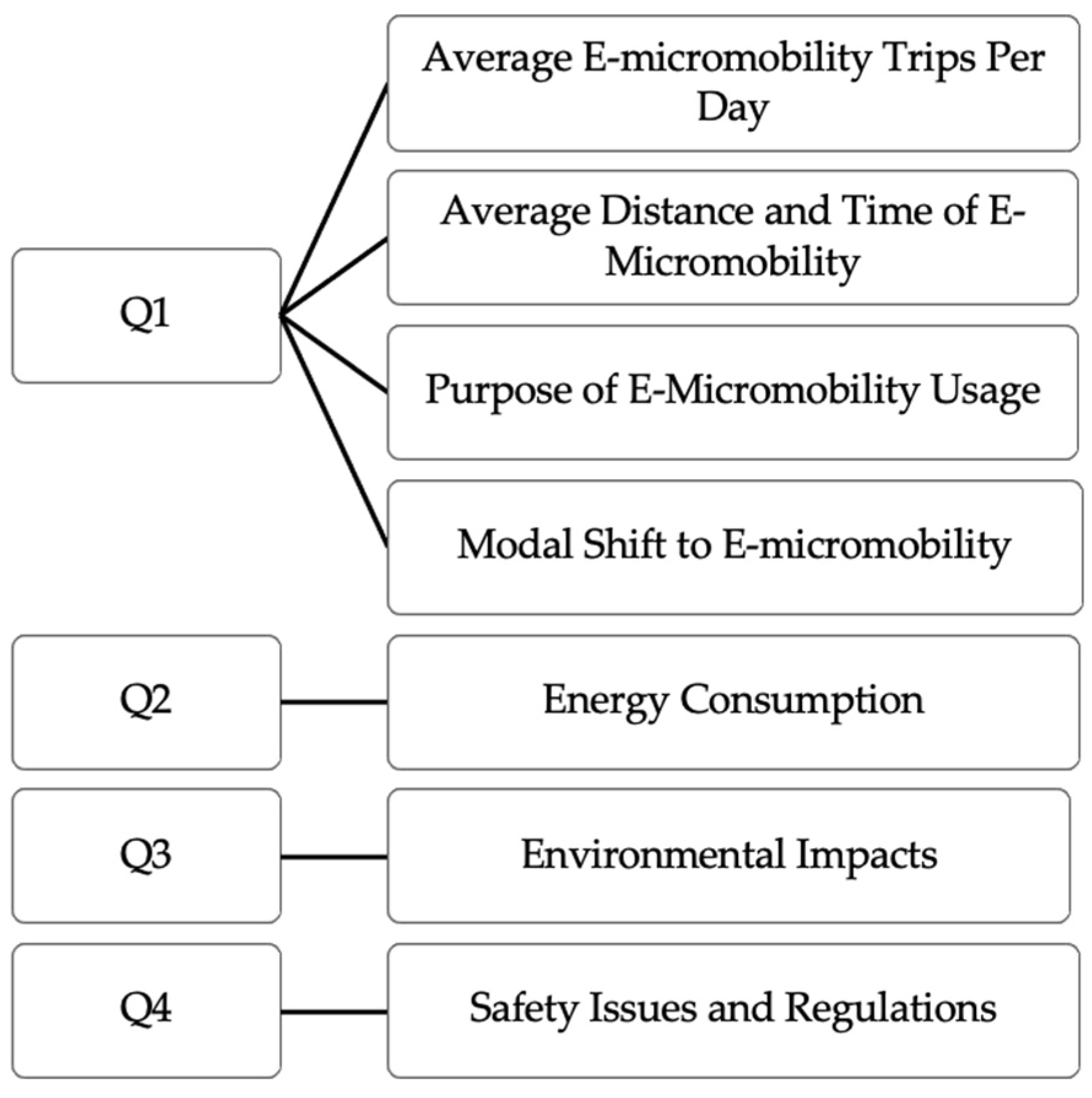
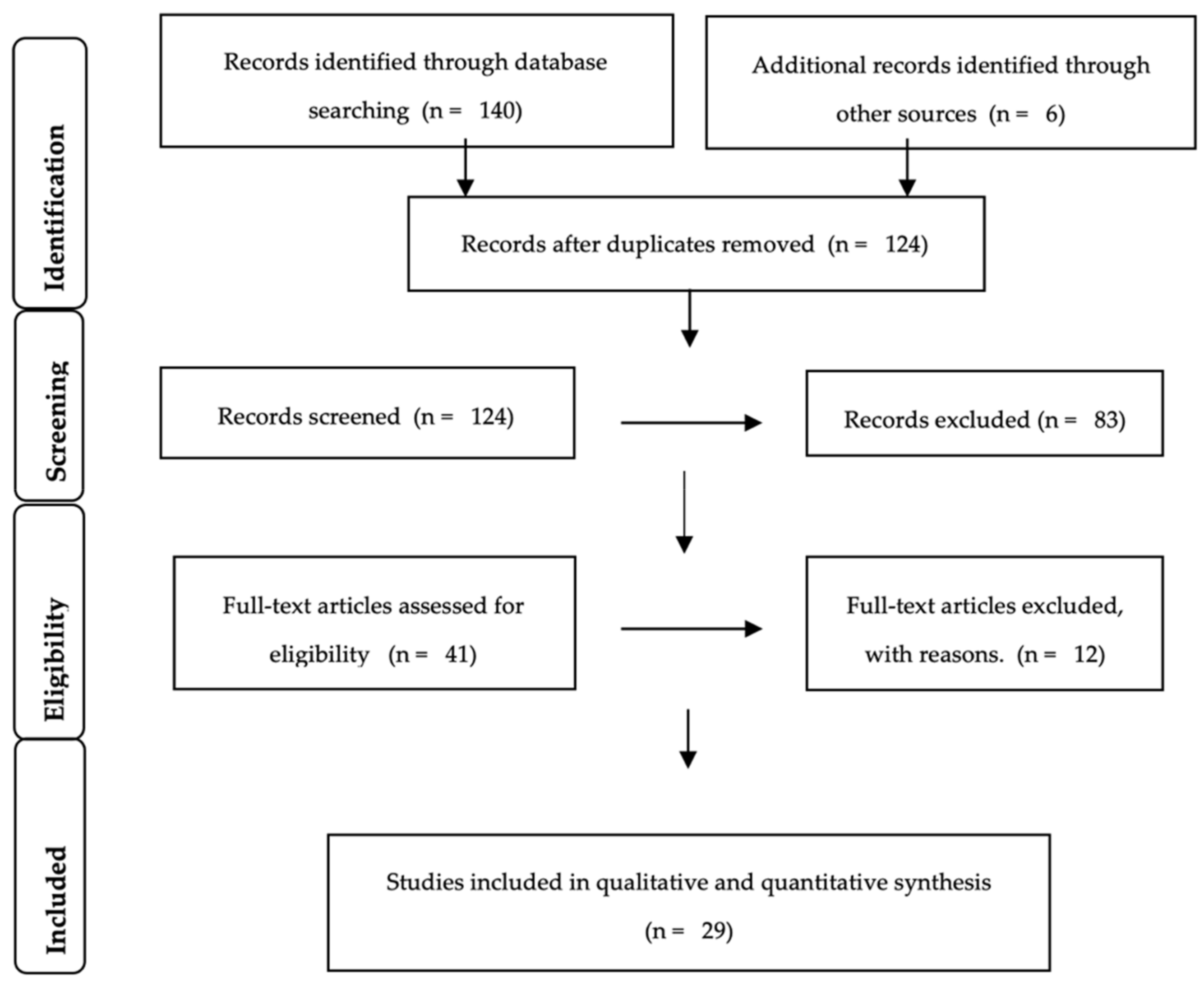
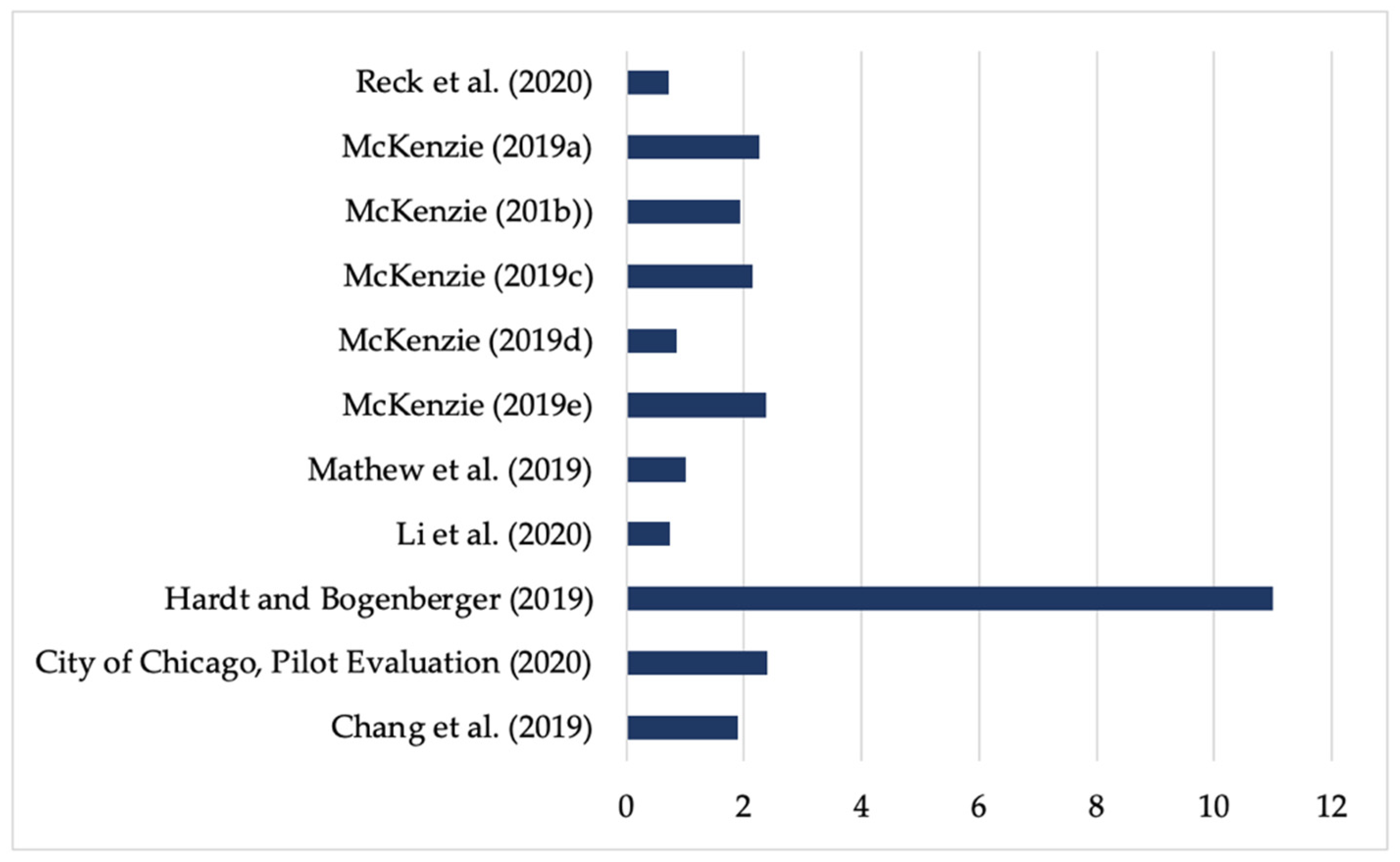
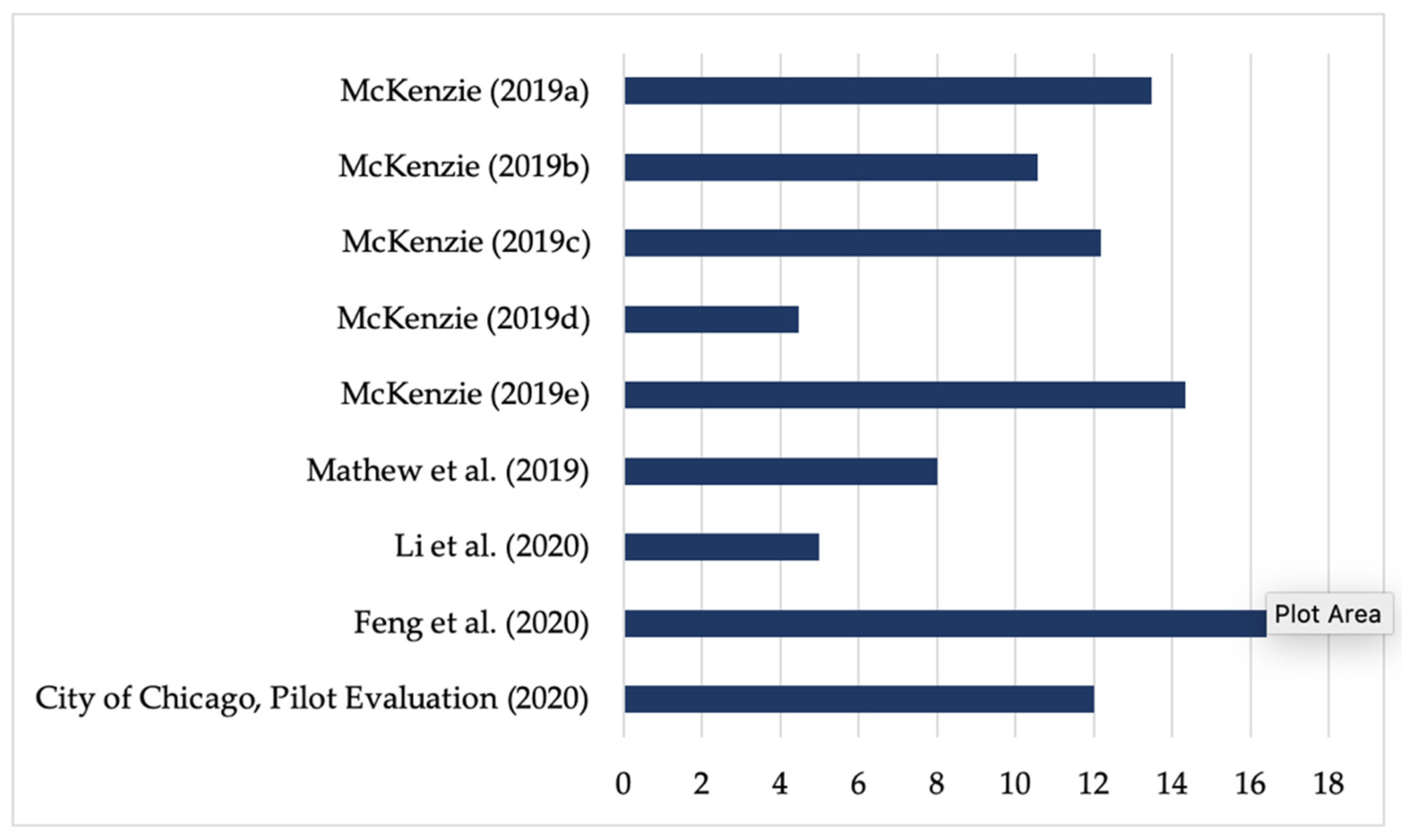
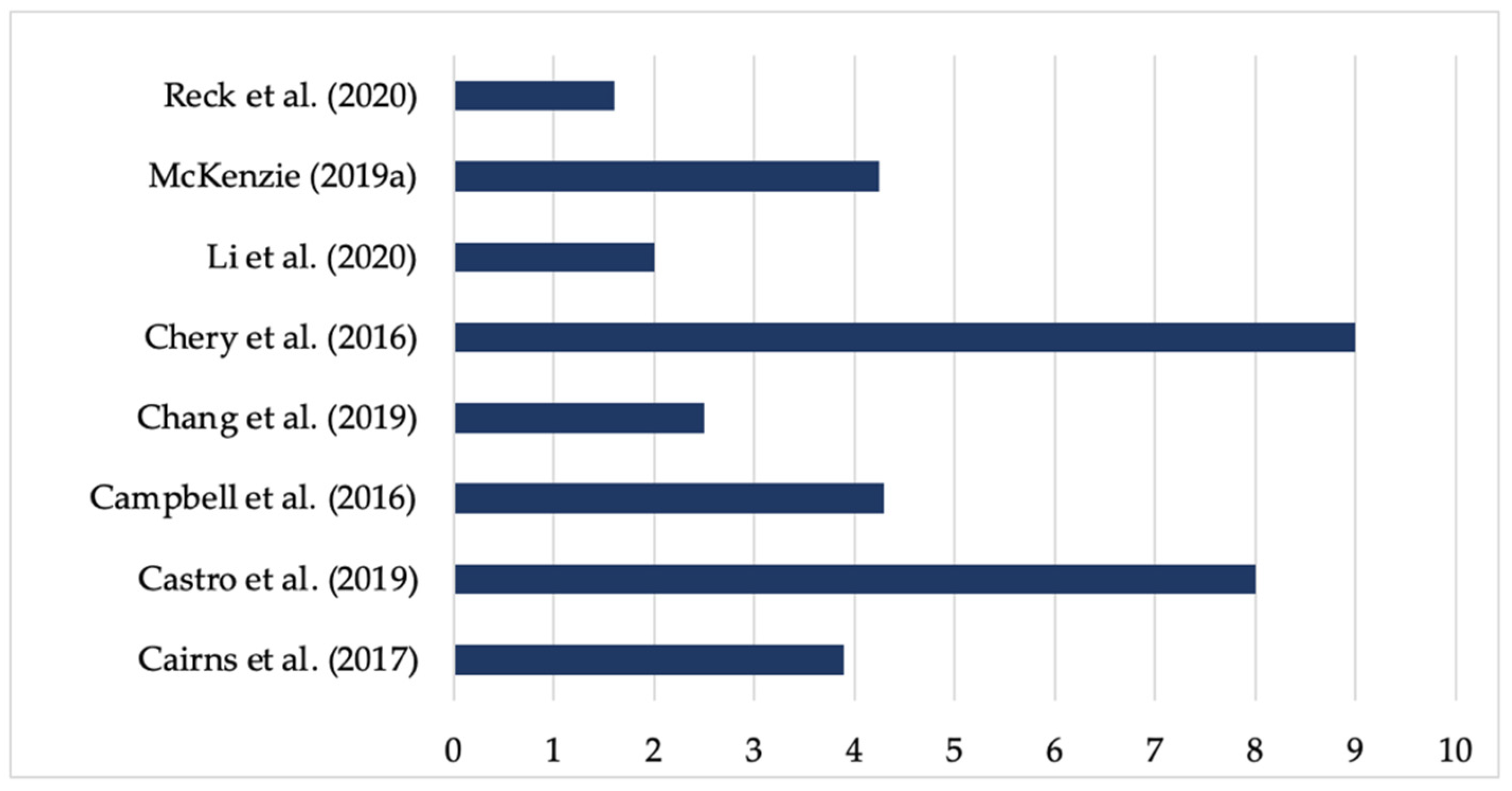

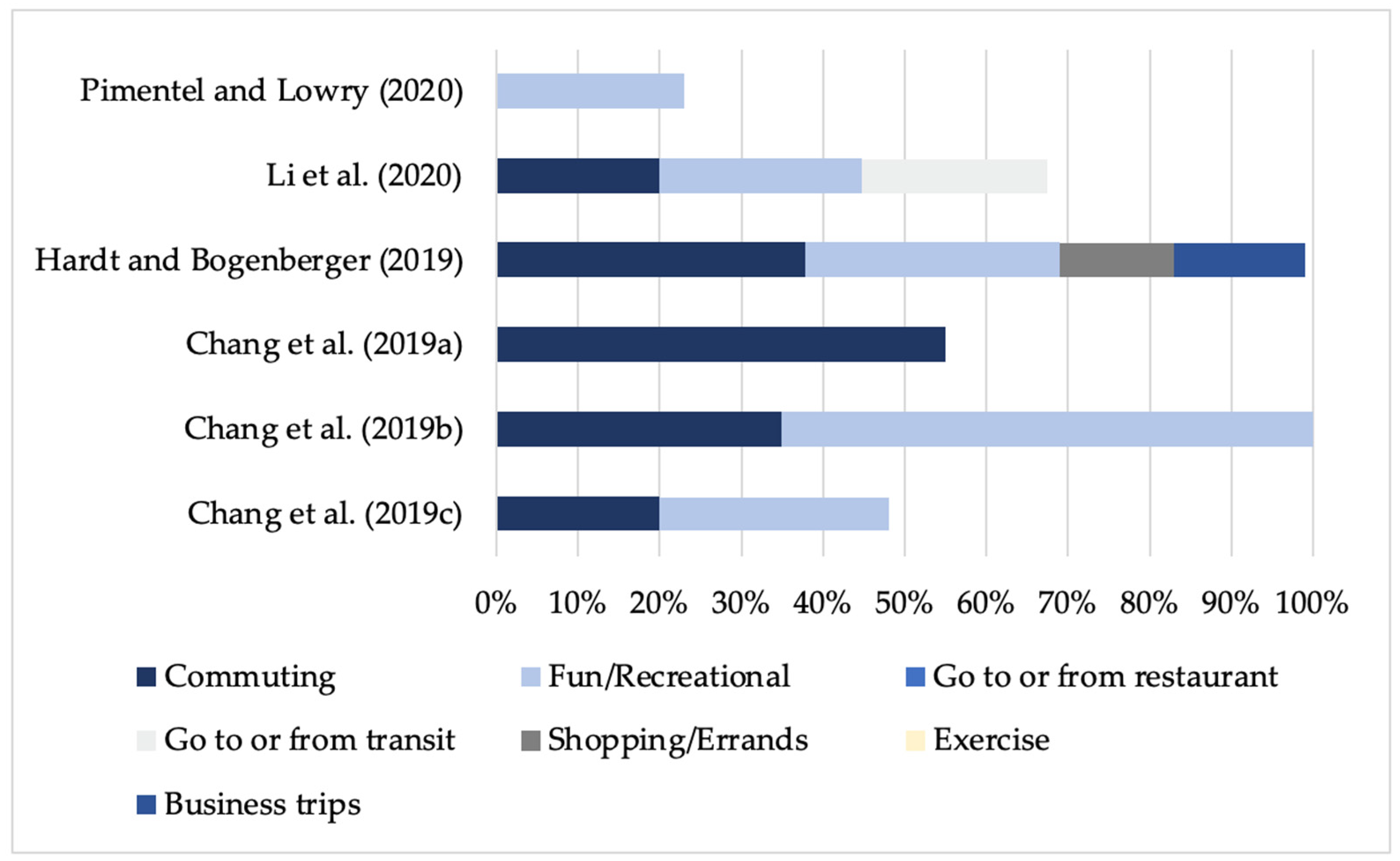
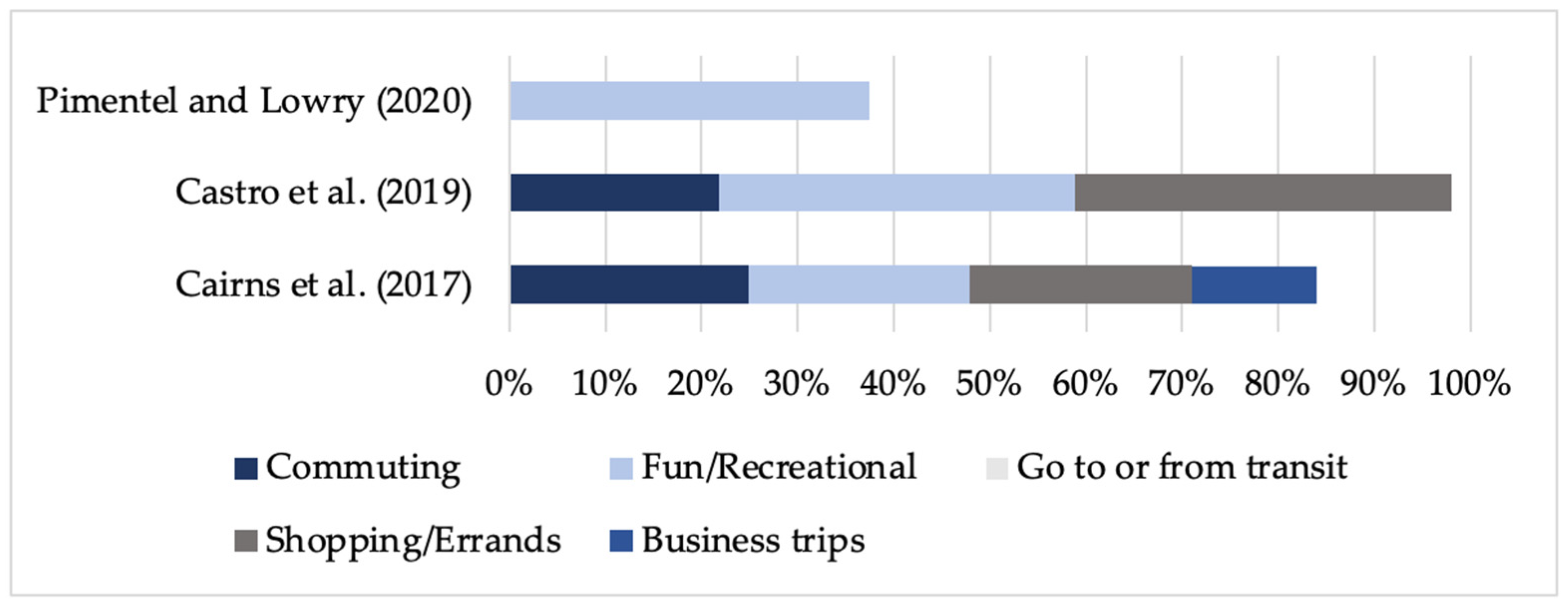
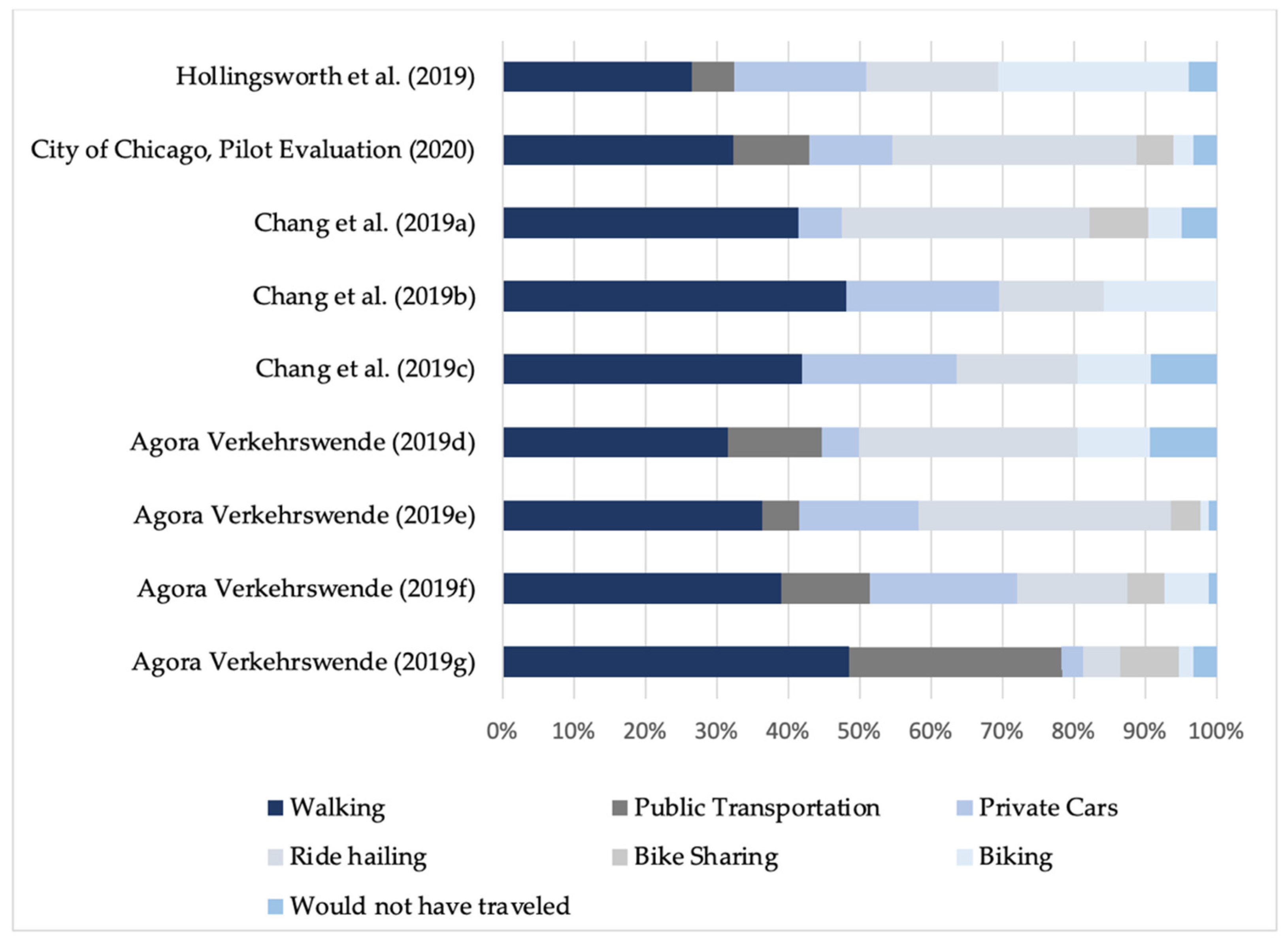
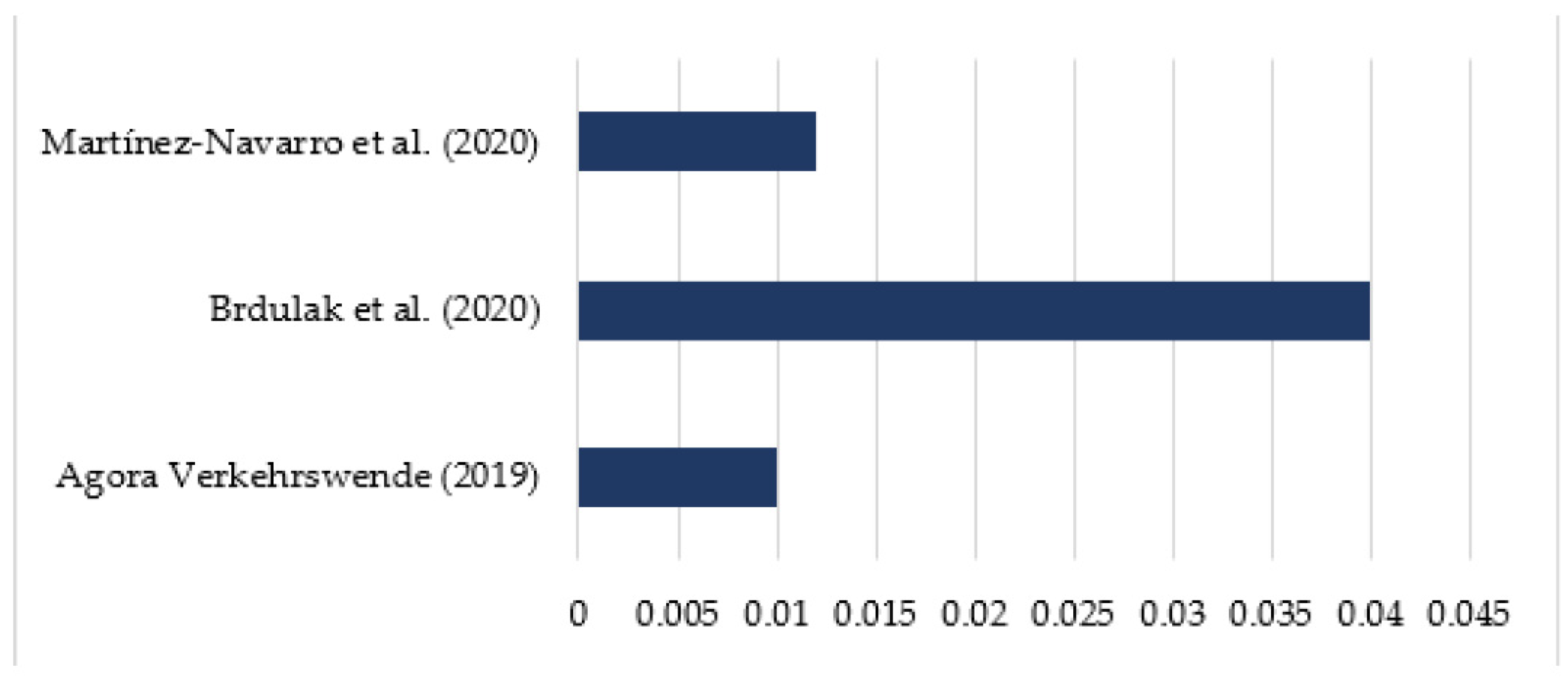
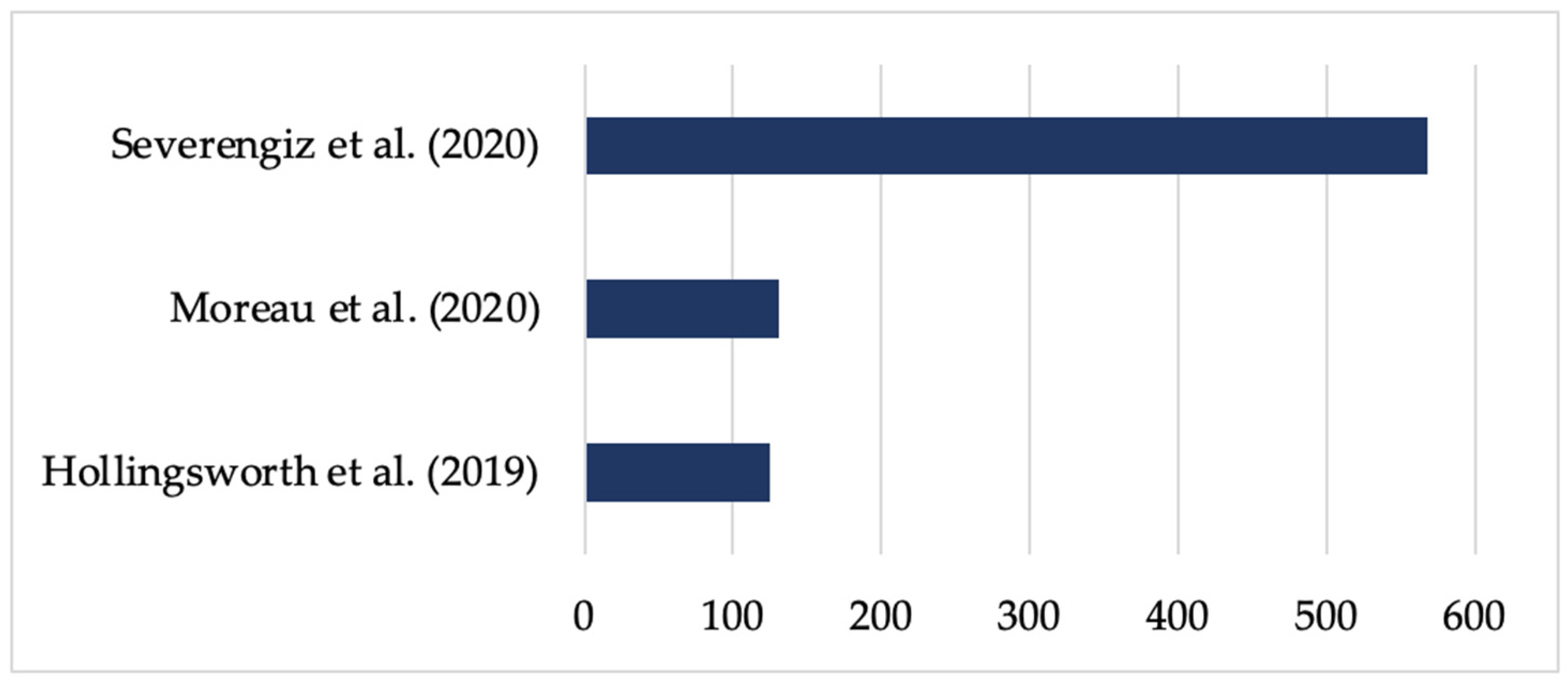
| Source | Literature Review Regarding Average Trips per Day (the Results Were Acquired by Dividing the Total Amount of Trips by the Days of the Research Period.) |
|---|---|
| Bielinski and Wazna (2020) | 168,300 trips were made per day with an electric bike-sharing system of 4080 vehicles in Tricity, Poland. |
| Castro et al. (2019) | A survey conducted in seven European cities (PASTA project) with 204 people reported that the average number of trips per day with e-bikes was 0.8. |
| Chery et al. (2016) | The number of e-bike trips in 2008 was reported as 1.16, in 2011 it was reported as 1.05, and in 2012 it was reported as 1.03 per day in Kunming, China. |
| City of Chicago, Pilot Evaluation (2020) | According to the information that e-scooter companies provided, an average of 6846 trips per day were made with e-scooters in Chicago, USA. |
| Feng et al. (2020) | It was reported that 105,479 e-scooter trips were made per day in the USA (according to The National Association of City Transportation Officials (NACTO)). |
| Fyhri and Fearnley (2015) | The study conducted with 66 participants in Norway reported 1.4 e-bike trips per day. |
| Hardt and Bogenberger (2019) | As a result of a pilot project with 6 vehicles and 38 participants in Munich, an average of 49 trips were made per day. |
| Li et al. (2020) | In Zurich, Switzerland, according to the provided data, 465 trips per day were made with docked e-bikes in a normal period, which covered 15 February to 14 March, 2020. During COVID-19 (15 March to 14 April 2020), 299 trips per day were made. For dockless e-bikes, 241 trips per day were made in the normal period, and 102 trips per day during COVID-19. For dockless e-scooters, 60 trips per day were made in the normal period, and 50 trips per day during COVID-19 (for each of the three types of micromobility services, trip data were collected from three operators: Publibike, Bond, and Bird) |
| Mathew et al. (2019) | In Indianapolis, 4830 e-scooters trips were made per day. |
| McKenzie (2019) | According to the collected data, Bird reported 170 trips per day, Lime reported 214 per day, Lyft reported 835 trips per day, Skip reported 1487 trips per day, reported has 115 trips per day, and Jump e-bikes reported 325 trips per day, which led to a total of 2821 e-scooter trips per day, in Washington, USA (the results were obtained by dividing the total amount of trips over the 4-month research period). |
| Reck et al. (2020) | This study, based on Zurich, Switzerland, reported approximately 2800 trips per day, 1181 docked e-bike trips, 419 docked bike trips, 244 dockless e-bike trips, and 1032 dockless e-scooter trips. |
| Source | Literature Review about Regulations |
|---|---|
| Bielinski and Wazna (2020) | In Poland, the speed limit is designated as a maximum of 25 km/h for shared e-scooters. |
| Campisi et al. (2020) | In Italy, the use of micromobility vehicles is limited by the need for a license to rent vehicles, certain age groups, and use at certain times of the day and certain places, and the speed of travel is regulated by rules. |
| City of Chicago, Pilot Evaluation (2020) | In Chicago, the travel speed of e-micromobility vehicles is limited to 15 mph (approx. 24 km/h), and their use on pavements is prohibited; they must be used on bicycle paths, but as an exception, children under 12 years of age can use them on the pavement. The age restriction for the use of shared electric scooters is designated as 18. People over 16 years old can ride with a guardian. |
| Feng et al. (2020) | Based on ten cities in the USA, users are required to wear protective gear such as a helmet when using e-scooters. Stickers or lights should be used to make the vehicles visible during night rides. Drivers should not use electronic devices while driving, nor should more than one person use a vehicle unless it is not specifically designed for more than one person. E-scooters can be used on bike paths or on the sidewalk with speeds of 15 mph (approx. 25 km/h) and cannot be parked in car parks or parked in a way that prevents pedestrians. |
| Leger et al. (2018) | In British Colombia, the age limit is 6+, max speed is 32 km/h, in most regions there is no need for licenses or registration, but a helmet is required. In Alberta, the age limit is 12+, the helmet is required in most regions; in Manitoba and Quebec the age limit is 14+. |
| Pimentel et al. (2020) | The study states that the main problem is inconsistencies in the law. For instance, in Oregon, e-scooters are prohibited from use on the pavement, and the speed limit is 25 km per hour (approx. 15 mile/h), although by law, micromobility vehicles are also prohibited from traveling at a slower speed than the speed of traffic, i.e., if traffic flows at 25 mph, the e-scooter should not travel more slowly than 40 km. In West Hollywood, California, e-bikes are prohibited from driving on the sidewalk. In King County, Washington, wearing a helmet is mandatory but not mandatory in other parts of the state. When an e-micromobility user enters a different district, the age restriction application may change. Helmets are not compulsory when using e-bikes and e-scooters in more than 20 states, although 6 states have required helmets for e-bike users. |
Publisher’s Note: MDPI stays neutral with regard to jurisdictional claims in published maps and institutional affiliations. |
© 2021 by the authors. Licensee MDPI, Basel, Switzerland. This article is an open access article distributed under the terms and conditions of the Creative Commons Attribution (CC BY) license (https://creativecommons.org/licenses/by/4.0/).
Share and Cite
Şengül, B.; Mostofi, H. Impacts of E-Micromobility on the Sustainability of Urban Transportation—A Systematic Review. Appl. Sci. 2021, 11, 5851. https://doi.org/10.3390/app11135851
Şengül B, Mostofi H. Impacts of E-Micromobility on the Sustainability of Urban Transportation—A Systematic Review. Applied Sciences. 2021; 11(13):5851. https://doi.org/10.3390/app11135851
Chicago/Turabian StyleŞengül, Buket, and Hamid Mostofi. 2021. "Impacts of E-Micromobility on the Sustainability of Urban Transportation—A Systematic Review" Applied Sciences 11, no. 13: 5851. https://doi.org/10.3390/app11135851
APA StyleŞengül, B., & Mostofi, H. (2021). Impacts of E-Micromobility on the Sustainability of Urban Transportation—A Systematic Review. Applied Sciences, 11(13), 5851. https://doi.org/10.3390/app11135851







